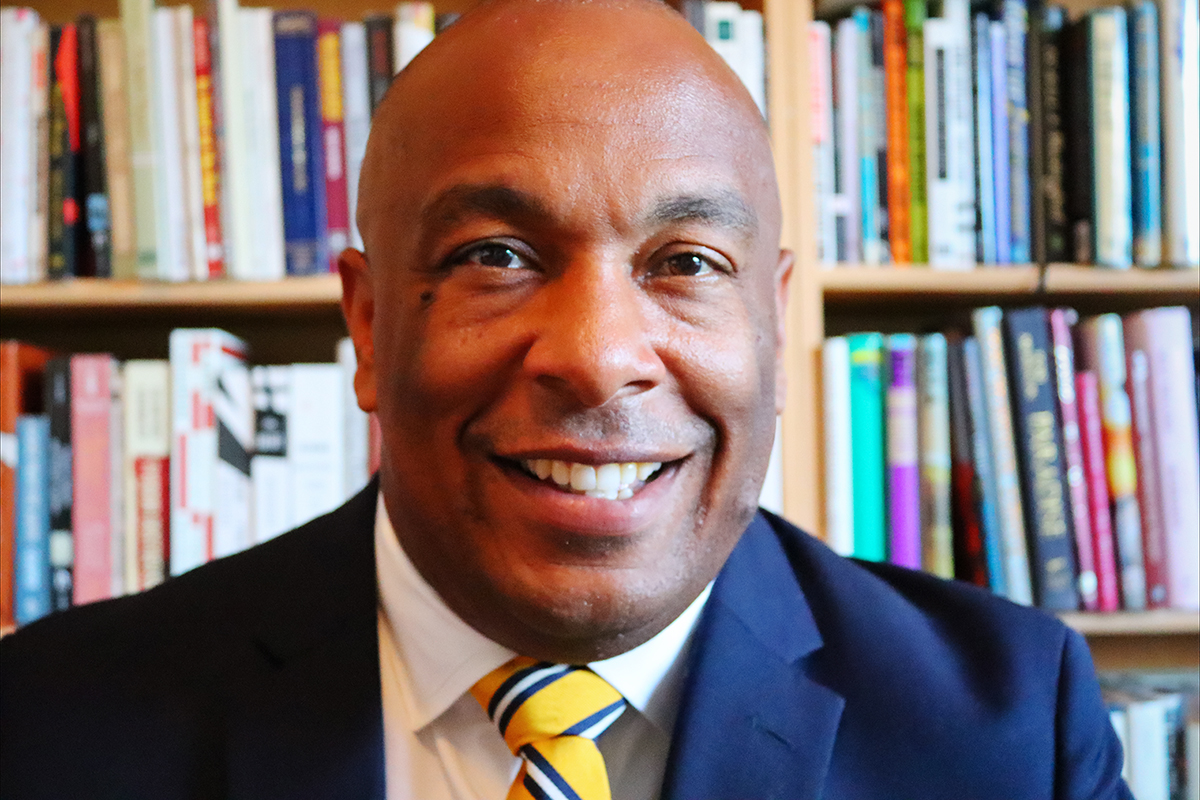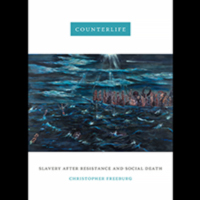
English professor Christopher Freeburg is the author of "Counterlife: Slavery After Resistance and Social Death." In the book, Freeburg states that scholars should look at the lives and creativity of slaves more broadly than whether their actions led to freedom.
Courtesy Christopher Freeburg
CHAMPAIGN, Ill. — When scholars study slavery and its aftereffects, they do so in terms of freedom and whether it is achieved or obstructed. Christopher Freeburg, an English professor at the University of Illinois Urbana-Champaign, suggests a new way to look at slavery and Black lives, rather than through the lens of freedom, agency and domination.
Freeburg examined written and artistic representations of slavery in his book "Counterlife: Slavery After Resistance and Social Death." He maintained that scholars are too focused on asking whether the actions of slaves were acts of political resistance that would lead them to freedom or whether they would benefit their masters. Instead, he considered how their social lives, artistic creativity and religious practices created meaning separate from the question of freedom.
The book's title signifies the undoing of expected conventions.

"Counterlife: Slavery After Resistance and Social Death" is published by Duke University Press.
Courtesy Duke University Press
"Can we analyze the depictions of enslaved Africans – which contain physical violence, psychic terror, spiritual deliverance and artistic genius – without the critical perspectives that emphasize slaves' success or failure to disrupt their masters' control over them?" Freeburg wrote in the book's introduction.
His aim was to examine how slaves lived, believed, acted and thought, and the complexity of their relationships, whether or not they led to a pathway toward freedom.
"Most of the things they did didn't lead to freedom," Freeburg said.
"The natural inclination is to think about freedom. It's very hard to get outside of those things, very challenging, especially when it's true that part of what our understanding of what it means to be free in America is defined by what it means to be a slave," he said. "Those oppositions are baked into the way we think and the way we argue, and even the way we come up with research questions. They can be very powerful, interesting and complex without having to narrate them as something going toward freedom or overtly political."
Scholarship and politics tend to present questions concerning slavery and Black lives in oppositional terms, but literature and art are much better at portraying complexity and ambiguity, Freeburg said. He pointed to the Pulitzer Prize-winning novels "The Known World" by Edward P. Jones and "Beloved" by Toni Morrison that find humanity "in a deeply dehumanizing and destructive environment."
"It's especially challenging because slavery is such a horrific subject and we want conclusions – who's bad, who's morally wrong and who's responsible," he said.
In his book, Freeburg used the example of slaves coming together to sing spirituals such as "Steal Away." Scholars debate whether the lyrics refer to patiently waiting on the Lord rather than resisting slavery and therefore reinforcing the interests of white masters, or whether they are references to escape. The songs include a large amount of improvisation, which was shaped by each person's story of conversion. The meaning slaves gave the songs didn't become more or less significant depending on what it indicated about their resistance to slavery, Freeburg said.
He discussed how contemporary artist Radcliffe Bailey depicts slavery. Bailey's painting "Western Currents" is the cover art for "Counterlife."
"It's powerful and mind-blowing as a visual piece. It was a dark time but there's light. With the skeletons in the water, he's thinking about the Middle Passage and death. The figures on the boat are like religious symbols. The border between life and death is being blurred," Freeburg said. "It indicates slavery's weight, its significance on the modern world. There's great beauty, even in tragedy.
"Even if you think every story is about slavery or freedom, the effect of that story is going to communicate something beyond those oppositions. It's why Toni Morrison called it unspeakable. It's unspeakable in how challenging it is to communicate those atrocities and tragedies," Freeburg said. "I try to wrestle with that in a way that doesn't pin it down to one particular scheme toward political ends or freedoms."






